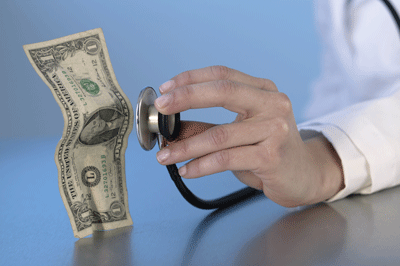One of the most common arguments for an individual mandate is that “free-riders” – the uninsured who consume emergency room care with no way to pay for it – are jacking up health care costs for everyone else.
The argument begins by pointing out that sickness and emergency can strike anyone at any time, and therefore people don’t have an active choice about whether or not to participate in the health care market. Inevitably, they have to. Thus, so the argument goes, it isn’t fair for people to “free-ride,” charging higher costs to everybody else. A mandate ensures that everyone will pay their fair share.
This is a seductive argument, but it needs to be thought through a second time.
First, estimates in terms of the free-rider problem are somewhere around $43 billion a year. That’s not chump change, but it is small compared to other drivers of health care costs, including undercompensated care resulting from Medicare and Medicaid.
Medicaid reimburses doctors at almost a third less than what private insurers pay, significantly worse than Medicare, which pays about 20 percent less than private insurers. This causes many doctors not to accept Medicaid, driving Medicaid recipients to hospitals to seek basic care. Since hospitals are reimbursed at lower rates same as doctors, hospitals lose money on Medicaid patients, soaring costs by hundreds of billions of dollars for everyone else.
Further, rather than fix the problem of free-rider costs, the mandate would shift those costs and then amplify them. Instead of paying higher premiums people would be paying higher taxes, and more health care would be consumed. Think about it this way: If the uninsured are given free or subsidized insurance, they will end up using more health care – why not use it if it’s paid for? This could be good from the standpoint of their health – but if the argument is saving money it doesn’t work. If someone gets half the health care he needs and sticks you with the bill your premium goes up by, say, $50. If he then gets all the care he needs through government paid insurance, you save $50 on your premium but pay $100 more in taxes. This doesn’t necessarily mean it’s not worth doing if the goal is to help the poor get health care – but don’t pretend it saves money for everyone else.
Finally, implementing the individual mandate as a cure for the free-rider problem is like mandating that government provided food stamps are spent on filet mignon and cabernet: It’s gratuitous. Why must individuals buy comprehensive health care plans as determined by the rules of ObamaCare when emergency care insurance would suffice?
As Avik Roy asks: “Why is spending large gobs of taxpayer money to only partially address a problem costing less gobs of taxpayer money called an improvement?”
If the way to fix the free-rider problem were merely as simple as a mandate, why not fix the hunger problem by mandating everybody buy food? – after all, we’re all paying higher costs for government provided food stamps, school breakfast and lunch programs and other subsidized wellness programs, and we don’t have an active choice about whether or not we eat. In fact, it was then Senator Obama who made this argument during his campaign, scoffing at the idea of an individual mandate: “I mean, if a mandate was the solution, we can try that to solve homelessness by mandating everybody to buy a house.”
The individual mandate is already under siege from a constitutional standpoint; its case for cost control and solving the free-rider problem is just as flimsy.
Source material can be found at this site.










